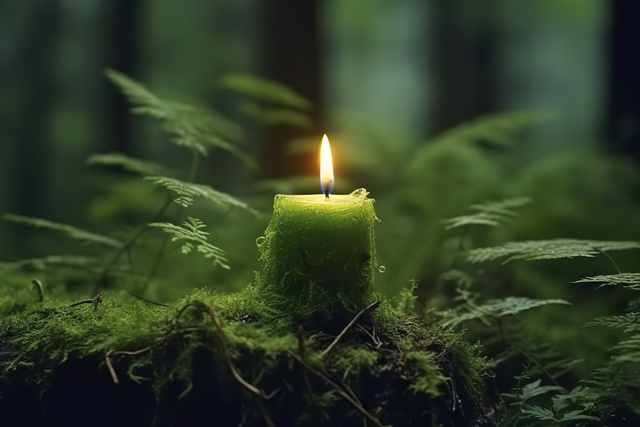
In recent years, there has been a growing interest in green burials as more people seek to minimize their environmental impact, even in death. A green burial, also known as a natural burial, is a way to honor the deceased while preserving the environment. This eco-friendly approach to funerals eliminates the use of toxic chemicals, non-biodegradable materials, and energy-intensive practices commonly associated with traditional burials. This guide will walk you through the essentials of planning a green burial, ensuring that your final farewell is both meaningful and environmentally conscious.
What Is a Green Burial?
A green burial is designed to have minimal impact on the environment. It involves the burial of the body in a natural setting, using biodegradable materials and without the use of embalming fluids or non-natural grave liners. The goal is to allow the body to decompose naturally, returning to the earth in a way that supports the ecosystem.
Key Principles of Green Burials
- Biodegradable Caskets or Shrouds: Instead of using traditional caskets made of metal or treated wood, green burials employ caskets made from biodegradable materials such as bamboo, wicker, or untreated wood. Some families opt for shrouds made from natural fibers like cotton, linen, or wool.
- No Embalming: Embalming involves the use of formaldehyde and other chemicals to preserve the body, which can be harmful to the environment. Environementally friendly burials forgo embalming, allowing the body to decompose naturally.
- Natural Burial Sites: Environmentally friendly burials typically take place in conservation areas or natural burial grounds that prioritize the preservation of local ecosystems. These sites often serve as wildlife habitats and are maintained without the use of pesticides or artificial irrigation.
- Grave Markers: Instead of traditional headstones, green funerals may use natural markers like trees, shrubs, or simple engraved stones that blend with the landscape.
The Benefits of Green Burials
Choosing green burials offers several benefits, both for the environment and for those who wish to leave a legacy of sustainability.
- Environmental Preservation: Green funerals contribute to the conservation of natural resources by avoiding the use of non-biodegradable materials and toxic chemicals. They also promote the preservation of natural landscapes and wildlife habitats.
- Lower Costs: Green funerals are often more affordable than traditional burials because they eliminate the need for embalming, expensive caskets, and elaborate grave markers. The simplicity of a green burial can also reduce funeral costs significantly.
- Simplicity and Meaning: For many, the simplicity of a environmentally responsible funeral resonates with their values and beliefs. It allows for a more intimate and meaningful farewell, where the focus is on honoring the deceased and their connection to the earth.
- Supporting Conservation Efforts: Many green burial sites are located in conservation areas, where the purchase of a burial plot helps fund the preservation of natural habitats and supports environmental initiatives.

With the rise of “green burials” using environmentally friendly means, biodegradable caskets are becoming ever popular, including the “basket casket” which is a casket comprised of wicker basket materials, which provide a natural and green theme for any funeral.
Planning a Green Burial: Step-by-Step Guide
If you’re considering a green burial, the following steps will help you plan a funeral that aligns with your environmental values.
Step 1: Choose a Green Burial Site
The first step in planning a natural funeral is to select an appropriate burial site. Look for natural burial grounds or conservation areas that offer green burial options. These sites are often managed with an emphasis on environmental preservation and may provide various options for grave markers or memorials.
Step 2: Select a Biodegradable Casket or Shroud
Next, choose a biodegradable casket or shroud for the burial. Many eco-friendly funeral sites have specific requirements for the materials used, so be sure to check with the burial ground for approved options. You can find a range of eco-friendly caskets (aff) made from materials like bamboo, wicker, or untreated wood. Alternatively, a simple burial shroud made of natural fibers can be used.
Step 3: Opt for No Embalming
Green burials do not involve embalming, so you’ll need to make arrangements with a funeral home that respects this preference. Some natural funerary sites may require refrigeration or dry ice to preserve the body until the burial takes place, typically within a few days after death.
Step 4: Plan the Funeral Ceremony
A green burial ceremony can be as simple or elaborate as you wish. Some families choose to hold the service at the burial site, surrounded by nature, while others may prefer a more traditional service at a funeral home or place of worship. Consider incorporating eco-friendly elements into the ceremony, such as planting a tree in memory of the deceased or using sustainable materials for any decorations or printed materials.
Step 5: Select a Natural Marker
Instead of a traditional headstone, consider a natural marker for the gravesite. This could be a tree, shrub, or a simple engraved stone that blends with the natural surroundings. Some green burial sites may have specific guidelines for grave markers, so it’s important to consult with the burial ground before making a decision.
Step 6: Consider Memorial Donations or Contributions
In lieu of flowers, you may want to ask friends and family to make a donation to an environmental or conservation charity in memory of the deceased. Many green burial sites offer the option to contribute to conservation efforts as part of the burial process, allowing the memory of your loved one to support the preservation of the earth.
Legal Considerations for Green Burials
Before proceeding with a green burial, it’s essential to be aware of the legal requirements in your area. While green burials are legal in many places, the regulations can vary depending on the location and the burial site.
State and Local Regulations
Some states and localities have specific regulations regarding burials, including requirements for burial depth, cemetery designation, and the use of biodegradable materials. It’s important to research the laws in your area or consult with a funeral director who is familiar with green burials.
Burial Certificates and Permits
Just like traditional burials, green burials require certain documentation, such as a burial certificate and any necessary permits. These documents are typically obtained through the funeral home or the burial site and must be filed with the appropriate local authorities.
Conclusion
Green burials offer a meaningful and environmentally friendly way to honor the life of a loved one. By choosing a green burial, you’re making a conscious decision to reduce your environmental impact and contribute to the preservation of natural landscapes. As you plan this eco-friendly farewell, consider the simplicity and beauty that comes with returning to the earth in a way that supports the environment and future generations. Whether you’re planning for yourself or a loved one, a green burial is a powerful way to create a lasting legacy of sustainability.














